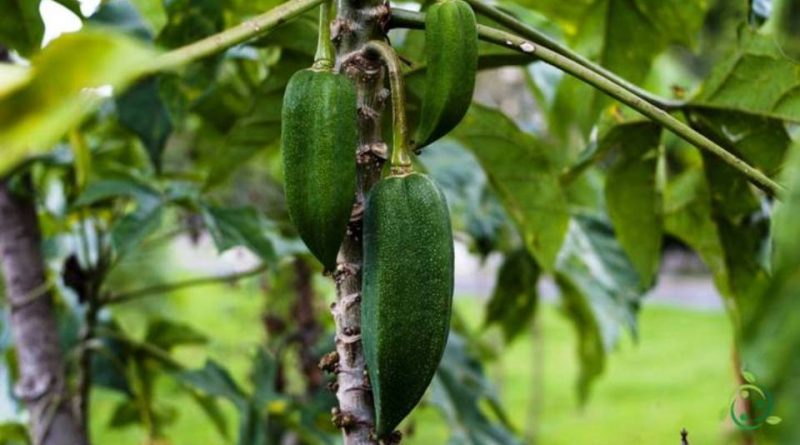How Babaco propagates
How Babaco propagates
The babaco (Carica × pentagona Heilborn) is a natural hybrid between two species related to the papaya (Carica papaya), Carica pubescens and Carica stipulata of the Caricaceae family.
The fruit is highly appreciated for human consumption, which resembles a white melon overall, but with a typically pentagonal section, similar to a pepper.
When the fruit is ripe, it has a yellow color streaked with green and a flavor reminiscent of pineapple and orange; it can reach the weight of 2 kg. The peel is thin and seedless (the seeds are completely missing). The plant does not need to be pollinated and the flowers are exclusively female.
This plant native to the montane rainforest of the low Andes in Ecuador and Colombia, bears relatively low temperatures better than papaya, even slightly above zero. It has therefore been successfully cultivated in countries such as New Zealand, Guernsey, the United Kingdom and also, with particular precautions, in Italy (and even in the Channel Islands).
For the propagation of Babaco, play strength, being the seedless fruit, it is necessary to start from cutting.
For the preparation of a cutting it is advisable to cut small branches and let them dry for a few days.
It is recommended to cut portions that have at least two buds.
At this point you need to put the cutting in a mixture of soil or compost with sand, in the proportion of 2: 1.
In the cold parts, babacos from nurseries give their best in spring and summer and it is advisable to let them stabilize in these warmer months. In frost-free climates it can be planted all year round.
The plants, planted in spring, need abundant irrigation and phospho-nitrogenous (preferably organic) basic fertilization.
At the beginning of the summer, the first fruits are produced, which grow during the autumn-winter period and at the beginning of spring they enter the ripening phase which lasts for 3-4 months. For production purposes, the plants are renewed after 2-3 cycles of fruiting, pollarding them at about 20 cm and raising the best shoots to recreate the new cuttings.
Once rooted, remember that it is a fast growing plant and the leaves are concentrated in the upper part.
It prefers environments with temperatures between 6 and 30 ° C, humid and with frequent rains. The soil must be dry and free from water stagnation.
In Sicily it is grown under a cold greenhouse but it is a plant sensitive to the salinity of the irrigation water.

